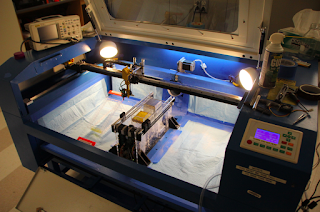Almost all the people in world heard about the term 3D Printing technology which is use to print object in 3 dimension. 3D Printers are used in various industrial sectors. So, today we are going to discuss about some facts related to 3D Printing Technology.
1. Fused Deposition Modeling (FDM) Technique:
Today, Fused Deposition Modeling (FDM) Technique is used as a most common form for 3D Printing. This technique is also known as Fused Filament Fabrication (FFF). This technique is work same as glue gun technique here filament or Thermoplatic are heated upto its melting point and shapes are created layer by layer. These 3D Printers typically create objects from bottom to up. FDM comprises 48% of all 3D Printers in use.
2. 3D Printers Are Used To Build Prototypes:
3D Printing technique first used to build tools and prototypes. Initially, The main purpose of 3D Printing used to build replacement tools and parts more efficiently. Then 3D Printers are used to develop scale prototype with greater accuracy compare to other methods. Now, the 3D Printers are used for production of complex designs and devices.
3. 3D Printed Clothes And Apparel:
Global brands are producing 3D Printed clothes and apparel. The role of 3D Printing in apparel is to produce prototypes such as luxury clothes for fashion designers. However, big brands such as Nike already making shoes for American football players using 3D Printing Technology. Also, New Balance uses 3D Printers for custom made shoes for all sports.
4. 3D Printed Food:
Scientist are looking into 3D Printed food. this sounds something out of science fiction movies but it's true. Currently 3D Printed food is still limited and its only works with ingredients which are softer such as Cheese, Chocolates and Syrups. Not only scientist even NASA is also studying the idea to provide 3D Printed food for their astronauts.
5. Stereolithography:
Stereolithography uses light for 3D Printing. For Stereolithography light craves model inside a tube of raw materials. The raw materials used are sensitive of light, hardening as it shines through them. The light cares the raw materials and it hardening layer after layer to form the object.
6. Selective Laser Sintering (SLS):
Selective Laser Sintering (SLS) is new method of 3D Printing. It creates models through using lasers of fuse powdered raw material into final form. The commonly used raw material in this method is nylon. The laser heat the nylon power to its melting point which makes the material plastic and it is fusibe into desired shape. the printing process finishes as the model is fully fused.
7. Selective Laser Melting (SLM):
Selective Laser Melting (SLM) works like Selective Laser Sintering (SLS). Since both 3D Printing method use lasers, Selective Laser Melting (SLM) is also called a sub type of Selective Laser Sintering (SLS). However the experts don's accept this classification. In Selective Laser Melting (SLM) before welding lasers melts raw material in layers of around 20 mm thick. As they welded they form final product or object. Unlike Selective Laser Sintering (SLS), Selective Laser Melting (SLM) uses metal powder instead of plastic or synthetic fibers. Selective Laser Melting (SLM) is one of the most common 3D Printing method that uses metals.
8. Advance 3D Printers:
The advance 3D Printers can use many kind of raw materials. Today most of the 3D Printer uses single kind of raw material such as plastic. cloth or metal. The problem arises when we have to print a material which is made up of different kinds of raw material in that case each kind of material are printed different parts of an object separately and then they are assemble together to produce final product. Now the scientist are studying how to make a 3D Printer which can print using any kinds of raw materials at the same time.
9. 3D Printers Threaten To Inventors And Innovators:
Intellectual property is major concern when it comes to 3D Printing. 3D Printing is threaten inventors and innovators. when it comes to violating patents and copyrights interested individuals and parties have already expressed the downside of 3D printing.
10. 3D Printer Weaponry:
3D Printed weaponry is another possible downside of 3D Printing. The 3D Printer allows to instant large scale production of any object including weapons such as guns. The government has concern for how this threatens existing gun regulations. So far the issue is protected by existing regulations.










Comments
Post a Comment
Please do not enter any spam comments